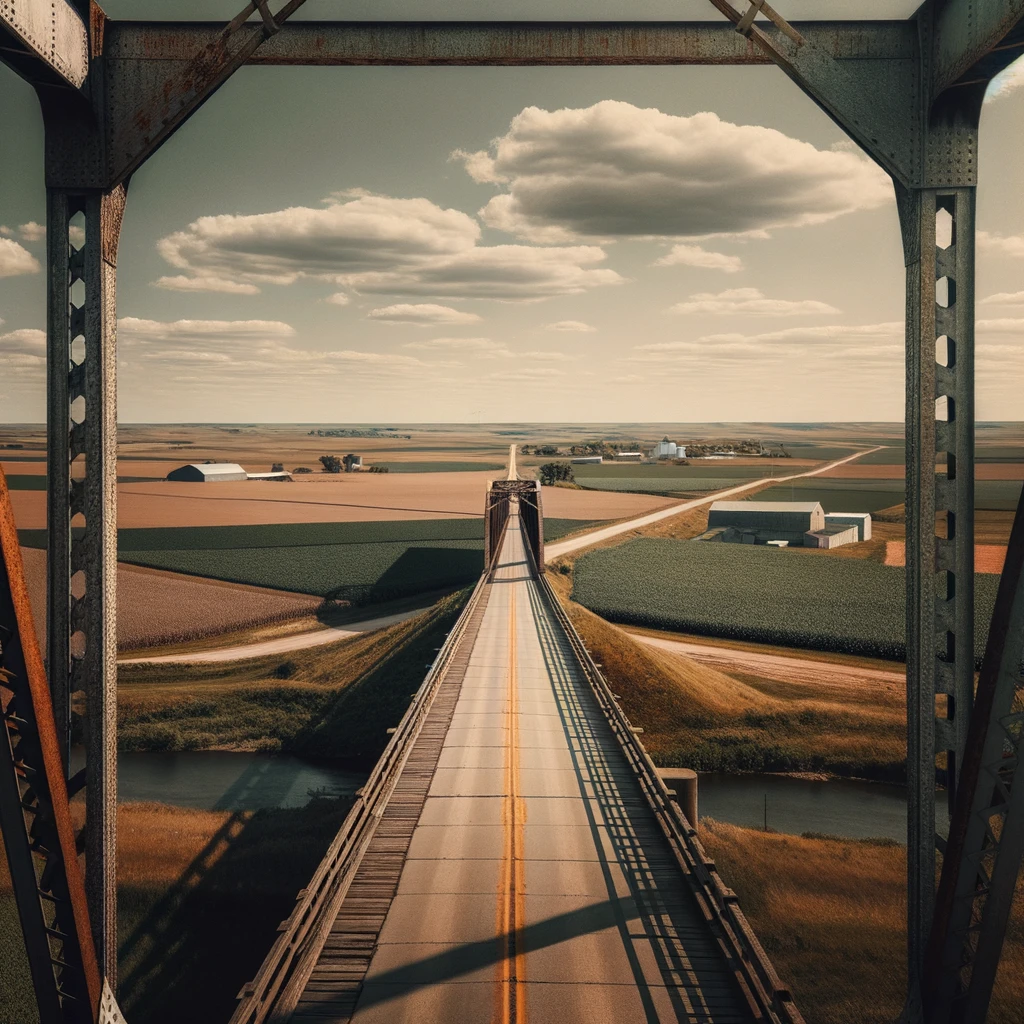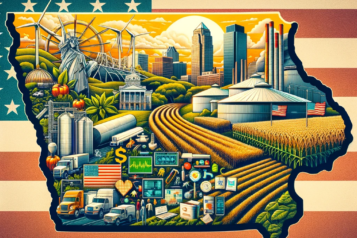In the heart of the Midwest, Iowa confronts a modern dilemma: advancing its infrastructure and connectivity to meet the demands of its residents and businesses. Known for its expansive farmlands and as a crossroads of American interstate commerce, the state faces unique challenges that must be addressed to maintain its economic vitality and quality of life.
Aging Infrastructure: A Patchwork in Need of Repair
Iowa’s infrastructure, once the backbone of its robust agricultural and manufacturing economy, now shows signs of considerable wear. Roads, bridges, and dams are aging, with some structures dating back to the early 20th century. According to the American Society of Civil Engineers, 19% of Iowa’s bridges are rated as structurally deficient, the highest percentage in the nation.
Rural roads are particularly affected, where the patchwork of repairs often leads to inefficient transportation, affecting local and regional businesses. The situation complicates the transport of goods, impacting everything from crop prices to the cost of consumer goods.
Digital Deserts: The Connectivity Crisis
Beyond physical infrastructure, Iowa’s digital landscape is a tapestry of disparities. Broadband access, crucial for everything from education to precision agriculture, remains inconsistent, creating “digital deserts” in areas that lack adequate internet services.
Despite the state’s efforts to expand broadband, many rural communities still struggle with connectivity that is either too slow or non-existent. This digital divide has real-world implications, particularly in education where students in remote areas cannot access the same resources as their urban counterparts.
Investment and Innovation: The Path Forward
Recognizing these challenges, Iowa has initiated several programs aimed at revitalization. The state has committed millions to infrastructure projects, focusing on critical areas like water quality and transportation systems. However, funding remains a contentious issue, with debates on how best to allocate resources without overburdening taxpayers.
Innovative solutions are emerging, with public-private partnerships paving the way for improvements in both infrastructure and connectivity. These collaborations aim to bring together the efficiency of private enterprise with the public interest in mind.
The Rural-Urban Divide: Seeking Equitable Solutions
A significant part of the conversation is bridging the gap between rural and urban areas. Initiatives are being put in place to ensure that infrastructure improvements benefit all Iowans, regardless of their zip code. The state is also looking at ways to leverage technology to enhance agricultural practices, a move that could position Iowa as a leader in high-tech farming.
The Road Ahead: Challenges and Opportunities
As Iowa grapples with these pressing issues, the road ahead is both challenging and full of opportunities. Infrastructure and connectivity are more than just conveniences; they are the lifeblood of economic and social vitality. The state’s success in updating its physical and digital landscapes will be a bellwether for its future, determining whether Iowa can continue to thrive as a key player in America’s heartland.
With the eyes of the nation on them, Iowans are determined to show that through innovation, investment, and a commitment to equity, even the most daunting infrastructure and connectivity challenges can be overcome.














